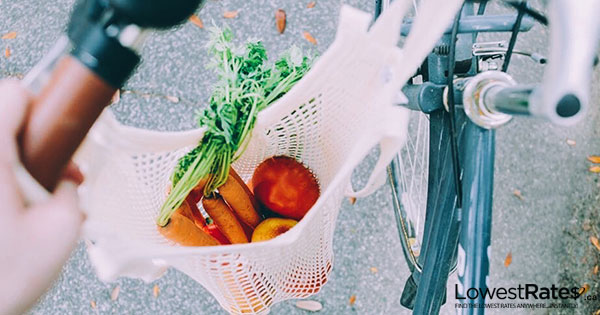How to Use Credit Cards to Get the Most out of Grocery Shopping
By: Nelson Smith on February 10, 2016 With the exception of housing, my biggest expense is food. I bet it’s yours too.
With the exception of housing, my biggest expense is food. I bet it’s yours too.
With the Canadian dollar continuing to weaken against its U.S. counterpart, it looks as though Canadian consumers will be stuck paying high prices for anything imported for at least the next little while, especially vegetables and meats.
There are certain strategies Canadian consumers can use to mitigate some of these costs. You can try getting protein by buying nuts, seeds, and eggs rather than expensive meat like beef. Chicken or pork, two cheaper meats, can be substituted in more often. You can also avoid more expensive vegetables like cauliflower in favor of cheaper ones like peppers and lettuce.
You can also use a few other strategies, like taking advantage of retailer frequent shopper specials, keeping an eye on flyer sales, and knowing where each store puts their 30%-50% off discontinued items. There are also apps which will give manufacturer discounts on certain items. Think of them as digital versions of sticking coupons in front of an item.
There’s one other strategy you can use: one you probably haven’t really considered. Here’s how you can use credit to help bring your grocery bill down.
Use credit cards wisely
Many of Canada’s top cash back credit cards give nice perks to folks who do most of their shopping in grocery stores. If you use credit cards to pay for your groceries, there are some great choices for you.
Take the Scotia Momentum VISA Infinite Card. With that card, you’ll earn 4% cash back on grocery store and gas station purchases, 2% back on drug store purchases and recurring bills, and 1% cash back on everything else.
If you’re a family of four and you spend $500 per month on groceries, after a year of spending, you’d knock $240 off your $6,000 grocery bill. Not bad for doing nothing different than you’d normally do.
Sure, the Momentum VISA Infinite has an annual fee of $99, but it’s easy to envision a scenario where a cardholder easily racks up that much in rewards on just the recurring bills portion and their other spending.
The SimplyCash Card from American Express is another option. The card offers a 5% cash back for the first six months of ownership (up to a maximum of $250), and then it drops down to 1.25%.
If you spent $500 on groceries and $1,000 in other spending, you’d max out your rewards over the first six months and then would earn $112.50 in the next six months. That’s a total of $362 in rewards over a year for doing nothing other buying groceries you would normally purchase. It’s a pretty easy way to get a couple of free cartloads of groceries.
The rewards would definitely be less during the second year of having that card, so my recommendation
would be to do a little credit card hacking and sign up for another card, maximizing your rewards in the process.
More tips for using credit cards for groceries
As much fun as earning credit card rewards are, you have to make sure the card gets paid back each month. If you’re paying interest on a balance, any cash back rewards are quickly erased by fees.
There are also grocery store issued credit cards. While they usually don’t have the greatest non-grocery rewards, they can be quite generous in giving rewards at their own chain. If you do your shopping primarily at one place, those kind of cards can really help as well.
The cost of groceries can really get your family down. But if you make careful moves, make a few sacrifices, and maximize your credit card rewards, you can ensure that you have enough for your needs – and you might even end up with a little extra.

